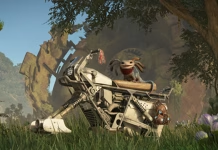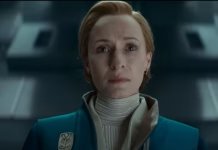I grew up experiencing two different eras in Star Wars: before the prequels and after the prequels. That’s not to pass judgment on the prequels, but before them there was a lot of the mythos still locked away in George Lucas’ mind. Ever since the first movie, authors have been adding their own chapters to the ever-growing universe of Star Wars. My first foray into the Star Wars novels was The Truce at Bakura, and I don’t have a great recall of the story other than it took place immediately after Return of the Jedi. Throughout middle school, after The Phantom Menace was released, I jumped through a few more books, particularly the Young Jedi Knights series and Shadows of the Empire. It wasn’t until high school when I became friends with The Outer Rim News Podcast co-host Austin Gordy, that I found out just how little I knew about the Star Wars universe. He introduced me to his vast library of books and miniatures of different ships (the Sun Crusher blew my mind at the time), and to a particular villain named Thrawn. He showed me Heir to the Empire and I assumed Thrawn was the old wizard-looking man on the cover. He corrected me, pointing out the blue man to the side. I thought at the time he looks pretty cool while Austin touted him as a tactical genius in his own trilogy that many considered a trilogy of sorts to the original Star Wars trilogy. I never read the trilogy at the time, but Thrawn was one of those characters that stuck in my memory without actually ever having read the books. Cut to present day. After his introduction to the new canon in Star Wars Rebels, I decided to finally jump into the story that made him a legend. And in case you haven’t read The Last Command, SPOILERS AHEAD.

I have finally finished the Thrawn Trilogy. My review will focus mainly on The Last Command, the final part of the trilogy. Heir to the Empire was a fun start to the story, with our heroes encountering a mysterious figure holding together the remnants of the Empire while causing major damage to the New Republic forces. Dark Force Rising showed us the Noghri culture and the Empire’s deceptive connection with them. In The Last Command, we see the finale of Zahn’s story starring the blue-skinned, red-eyed Grand Admiral.
For a recap, The Last Command follows the New Republic struggling to outwit the Empire’s new leader and master strategist, Grand Admiral Thrawn. Over the course of the previous two books, he managed to gain an advantage by finding a cloning facility and beating the Republic to the location of the fabled Katana fleet. By the third book, he’s making plays for territory.
What’s interesting about Thrawn that I didn’t know until I read the series was that he’s never a POV character for the reader at any point in the trilogy. Instead, author Timothy Zahn approaches the alien genius of Thrawn by showing him the same way Sir Arthur Conan Doyle would show us the erratic genius of Sherlock Holmes: by proxy with a trusted assistant. Holmes had Watson, and Thrawn had Pellaeon. Why do this? To me, it came across as a way to give him mystique. Characters gain a certain level of mystery when the audience is denied access to what they’re thinking. Like Pellaeon, we are never given more information on the Grand Admiral than he allows us to know.
He makes some serious plays against the Republic in his final book. He fools a planet into thinking he has shield-penetrating firepower. He orders a raid to abduct Leia and her newborn twins from the heart of the New Republic, which fails thanks to Mara Jade. Lastly, he attacks Coruscant from orbit by releasing multiple stealth-cloaked asteroids above their planetary shield, keeping any ships from getting in or out.
While doing this, Thrawn has also been dealing with two potential problems: Jedi Master clone Joruus C’baoth and the smugglers, namely Talon Karde. He attempts to placate the increasingly insane Jedi clone with the attempted abduction. After it fails, C’baoth (who’s been toying with power over minds) travels back to Wayland, now with its clone facility in full swing and takes over by slaughtering the ysalamiri that were supposed to depower him.
All of our heroes come together on Wayland and manage to stop and kill C’baoth, while Thrawn, watching his first battle spin out of control due to lucky timing, is stabbed in the chest by his lethal Noghri bodyguard, Ruhk.
After all this struggle between the New Republic and Thrawn, I was conflicted by how Thrawn’s demise played out. Throughout the first two books, I became increasingly agitated at how seemingly infallible Thrawn’s strategies were. The only things that seemed to get past him were improvisation (Luke’s X-Wing escape) or blind luck (Leia hiding on Honoghr). Getting to the third book made it worse toward the finale. When Thrawn predicted exactly what the New Republic was going to do leading to the final confrontation, I actually cursed out loud in annoyance. I didn’t know whether to be annoyed at the character for being so good at his job, or Timothy Zahn for making him so unbeatable. I started to guess what was going to be his downfall once I realized that he still had his bodyguard, Ruhk, and that he was still under the impression that the Noghri were completely loyal to the Empire. While I thought at first that C’baoth would be his downfall, that turned out to be only partly true.
Thrawn wasn’t beaten by planning. He was beaten by a perfect storm of bad timing, brought on partly by his own arrogance. His plan was to meet the New Republic in battle, but not to be blindsided by smugglers with their own plan. His plan on Wayland was to keep C’baoth under wraps with the Force-suppressing ysalamiri, but not to have his own men brainwashed into killing the creatures. Being stabbed by his own bodyguard never occurred to him. There was a kind of poetry to his demise, but it felt a little…lessened? Maybe that’s not the right term, but I wish there’d been slightly more to it, especially since so much of the finale with the heroes focused on C’baoth. There was just this expectation to me that in a trilogy titled The Thrawn Trilogy, there would be a more personal confrontation with the title villain.

My opinion aside, one thing that really intrigues me about Thrawn has been his enduring popularity since his introduction. While dying at the end of his own trilogy, Thrawn had a lasting impact on the Star Wars Expanded Universe and the fandom around it. What made him so popular?
Let’s travel back to the year of his introductory novel, Heir to the Empire. It was 1991, and Return of the Jedi was nearing its tenth anniversary. There was no hint or indication that the prequel trilogy was going to exist. Timothy Zahn brought forth not just another adventure, but a new villain who leaves the New Republic at a loss. What’s more, he wasn’t another lightsaber-wielding Dark Jedi or lightning-tossing Emperor. He was a villain that relied not on the Force, but on his intellect. Star Wars hadn’t seen a formidable or imposing military villain since Tarkin, so it was primed for a return to the concept.
Zahn’s post-Return story revitalized the Star Wars brand and paved the way for many concepts that would stay with Star Wars, even after the Disney acquisition. We have Thrawn appearing in Star Wars Rebels, as well as the forthcoming introduction of Ruhk into the animated series’ fourth and final season. Even Coruscant, the famous city-planet that was featured throughout the prequels, made its first appearance in Heir to the Empire.
All in all, for me, I have mixed feelings about The Last Command and the trilogy, but its impact is undeniable. Sometimes I was ready to finish a chapter so I could take a break, while other times I was hooked into the story. I recommend it for any Star Wars fan, simply for the value it still holds to the Star Wars universe.































